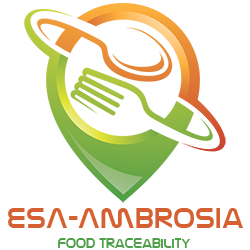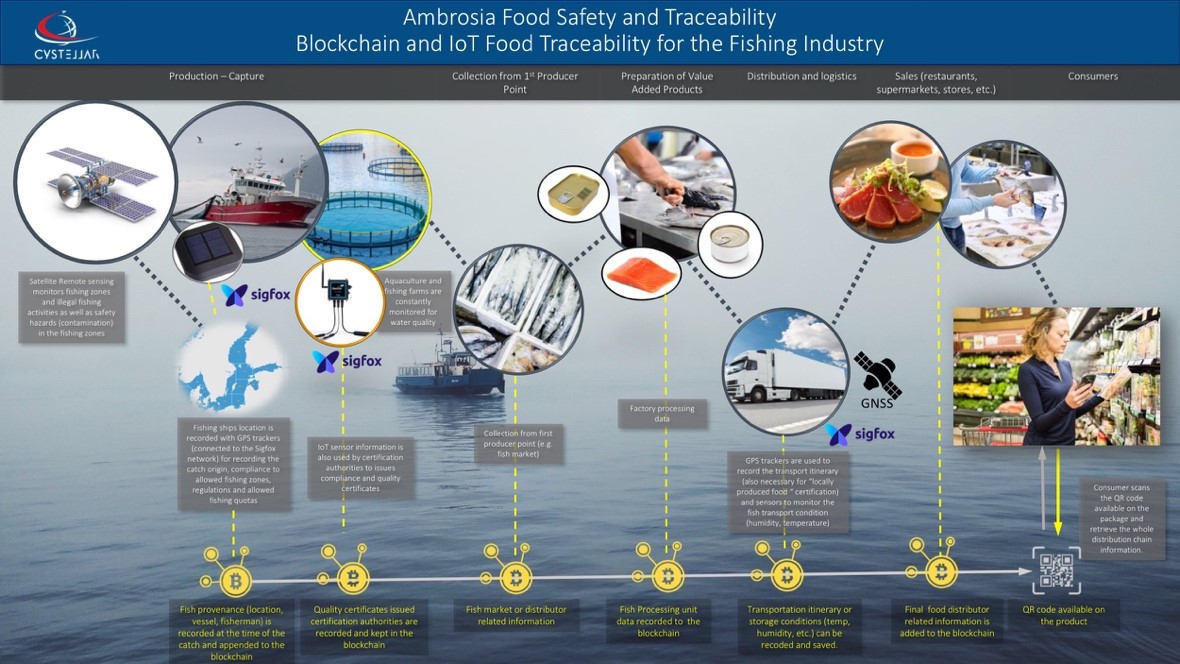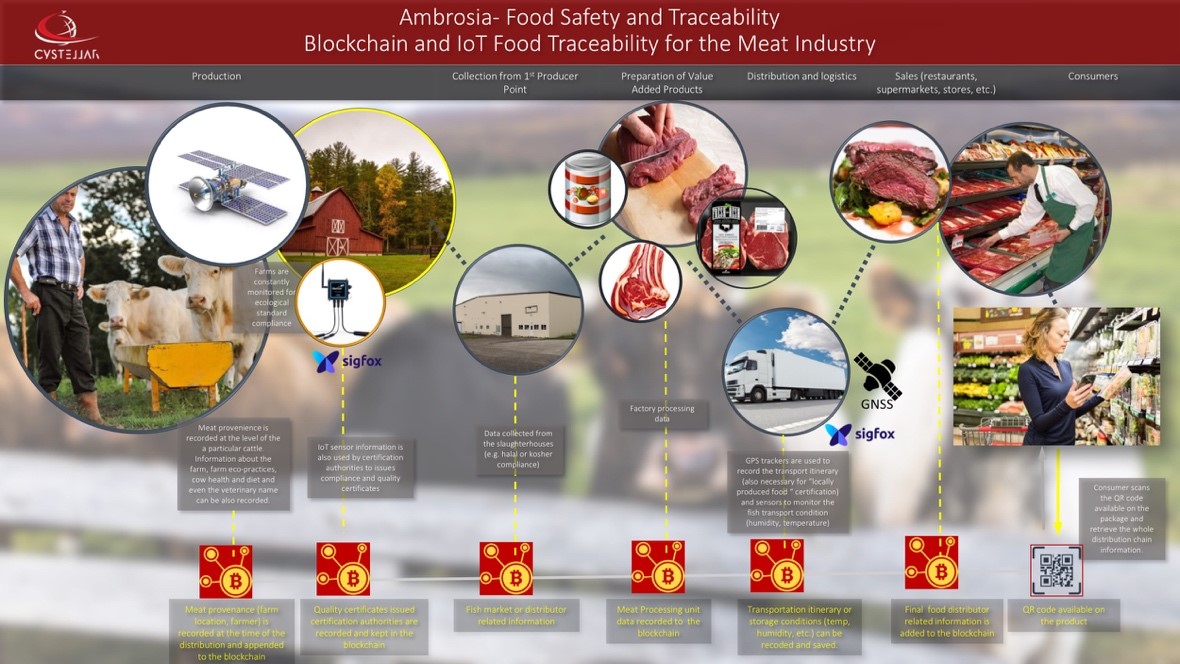
Objectives of the service
When considering food traceability, it is important to consider the need for the end solution to create net positive value for all the stakeholders (the consumers, the regulators, and all the companies that collectively make up the food supply chain). Clearly improving overall public health and reducing consumer exposure to compromised food is the number one goal and food traceability.
The overall business benefits of the project’s proposed approach and solution can be considered across 3 separate broad areas: (1) Benefits that result from the ability to execute faster and more targeted product recalls (including food recall insurance aspects), (2) Benefits resulting from chain efficiency and productivity gains that results from improved product labelling and tracking practices that have the potential to provide “real-time visibility” into product movement through the supply chain and (3) Benefits in using the underlying platform information to analyse the supplier base, the local food distribution system and to implement supplier development programs or sustainability management systems. The outcomes of an advanced tracking system are not limited to only the business implementing it. The generation of massive amounts of data will of course benefit the company thanks to process efficiencies, and even lower working capital needs. However, everyone from the suppliers to the end-consumers can exploit the information carried by the tags.
Users and their needs
The food traceability market has been growing significantly over the last years due to increasing concern among consumers for food safety and provenance. Increasingly, consumers are paying attention to healthier food diets, "healthy" food attributes (such as "freshness", "naturalness" “ecological” and "nutritional value") and overall sustainability of production and processing methods. Food certificates (eco, organic, locally-produced, GMO free, etc.) can greatly influence the consumer’s eating habits, shopping behavior and their willingness to pay a premium price for quality food. In order to be competitive, food distribution chains need to be more transparent about the food origin, the food nutritional value, its ecological qualities and its way of production and transportation.

The project addresses the needs of a food distribution supply chain consisting of a network of stakeholders involved in producing/growing, processing and selling the food that consumers eat. This includes:
- The Producers that grow and trade local food commodities such us corn, cattle or fish
- The Processors that process, manufacture and market food products such as flour or bread
- The Distributors including wholesale, transport companies, restaurants and supermarkets that market and sell food to
- The Consumers that shop, purchase and consume food; as well as
- Governments, Municipalities, Non-Governmental Organizations (NGOs), Certification Authorities and Regulators that monitor and regulate the entire food value chain from Producers to Consumers.
The feasibility of the approach has been investigated in the context of the local food distribution chain belonging to a Municipality from southeast region of Sweden and several private actors from the local food distribution chains. Additionally, the feasibility study has been extended to include private food supply chains from UK, Japan, Sweden and Italy (supermarkets, coffee distribution chains, meat distributors, aquaculture farms, local farms, logistics companies, insurance companies, cattle producers, wine producers and distributors, brand clothing companies, etc.).
Service/ system concept
The AMBROSIA solution consists of two interrelated products: (1) A Blockchain. Earth Observation (EO) and IoT-based food safety and traceability infrastructure that will be made available to the local food distribution supply chains and (2) A strategic planning and analytics platform for food distribution and logistics operations improvement dedicated to municipalities, regulators, policy makers and food distribution chain stakeholders. Hence, the proposed traceability systems will not reshape the structure of the value chain. However, it has the potential to make it reach new heights in terms of efficiency and sustainability.
AMBROSIA tracks food shipments and digitally record transaction, food status during transportation or environmental conditions and the food point of origin, From, their start at their journey at the farm, batches of food will be tagged with unique numerical identifiers and encoded into QR codes. Every time the food crosses another checkpoint, from farm to processors to store, their status will be signed and logged. A consumer then can scan (with the help of a mobile app) the QR code of the food product and in an instant, retrieve the food’s itinerary from farm to plate.


Space Added Value
The tremendous advancement during the last years in satellite technology (microsatellites) and the availability of IoT data gives us the possibility to collect and analyze large amounts of data from the food supply chain and transform it into actionable insights.
The main space assets integrated into the food traceability service are
- Satellite Earth Observation (SatEO) to enable collection of diverse environmental data, including crop health monitoring, mapping, change detection and safety hazards at the food point of origin (local farms, fisheries, coastal areas). The rural areas belonging to the Municipalities will be constantly monitored for chemical hazards, effects of natural disasters (earthquakes, storms, flooding, etc.) and any other hazards that could affect the safety of the food originating from the origin farm or negatively impact the logistics of the local food distribution chain. Coastal fishing areas will be monitored for water pollution hazard, illegal fishing activities, harmful algal blooms, etc. and other conditions that might result in safety risk on the seafood products captured in those are. Once a contaminated area has been confirmed, food originating from the affected farms can be easily market as unsafe and quickly recalled if it already entered the food distribution chain. In addition to hazard monitoring, satellite imagery over the same rural areas over multiple years can be correlated with the Municipality policies for rural development, detect changes and trends and provide valuable information about the impact of those policies.
- Satellite Navigation: GNSS systems provide precise positioning and guidance. GNSS data will be used to support trace and tracking application and geo-tagging data collection during transport and storage of food. For seafood distribution chain, fishing boats will be equipped with GNSS positioning units to record the boat location and the catch point. In this way, compliance to allowed fishing zones, regulations and allowed fishing quotas can be checked. Some of this information will be permanently recorded on the blockchain together with other food traceability related information.
Current Status
The feasibility study has been completed in December 2018. The project is planned to be continued as a demonstrator in collaboration with several governmental institutions and private food distribution chains (meat, seafood and fresh fruit).





